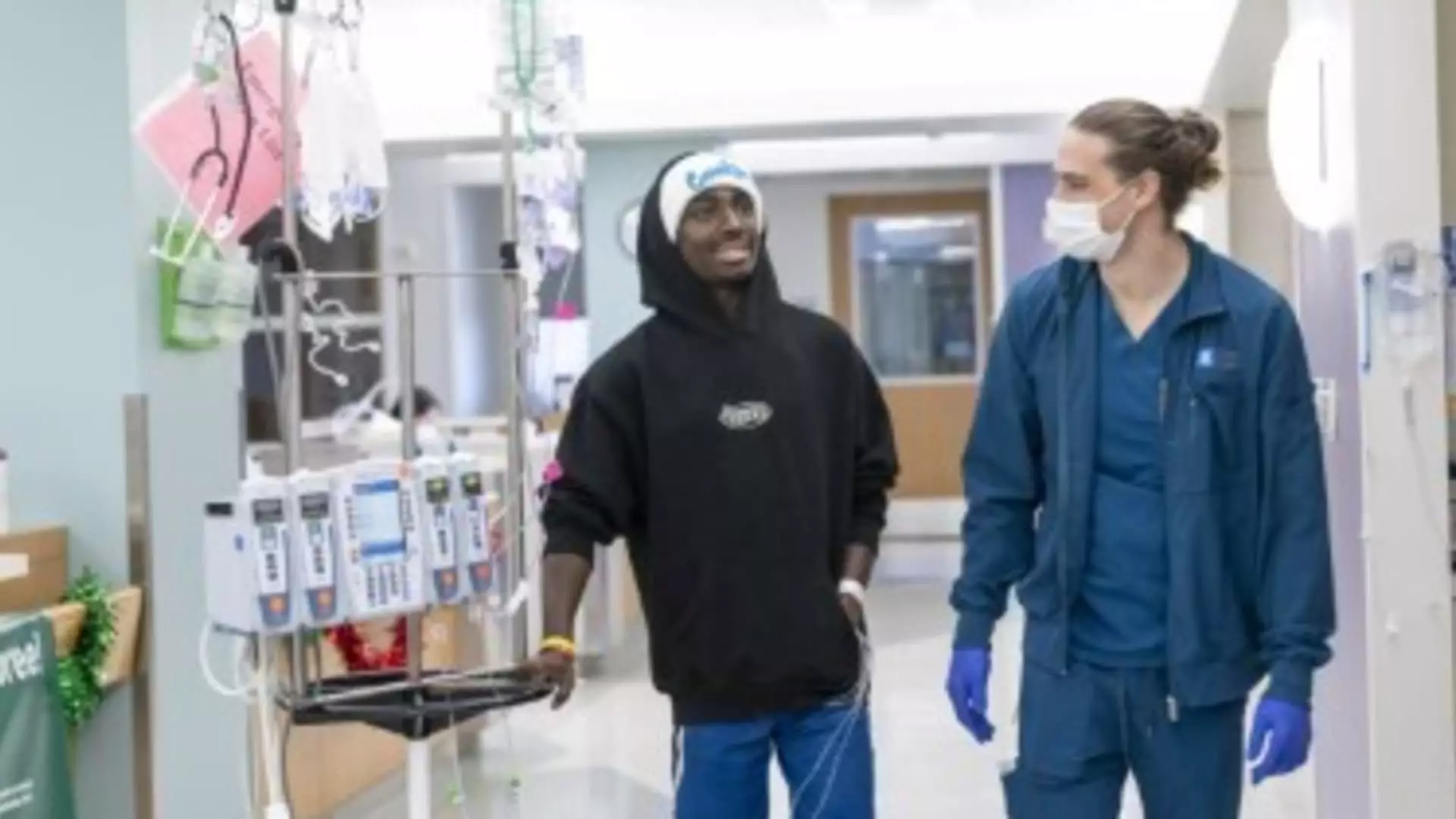Sickle cell disease (SCD) is a debilitating condition that has long thwarted the hopes of patients and families alike. For those affected, like Deshawn “DJ” Chow, the disease manifests through excruciating pain episodes, often culminating in frequent hospital visits and educational setbacks. Growing up with this chronic condition, Chow faced overwhelming challenges, but with the recent advent of gene therapy, there is a flicker of hope not just for him but for the many others living with this affliction. In this article, we will delve into the significant developments in SCD gene therapy, the hurdles in treatment accessibility, and the broader implications for patients and healthcare systems.
At just 19 years old, DJ Chow has lived a significant portion of his life burdened by the cruel grip of sickle cell disease. “It’s just been hard skipping school and always being in and out of the hospital,” he recounted, highlighting a universal plight among young patients. His family, determined to find him relief, sought cutting-edge gene therapies following FDA approvals. These new treatments, including Casgevy by Vertex Pharmaceuticals, represent a monumental leap in the medical landscape for SCD, costing an astonishing $2 million per patient. Yet, Chow’s experience embodies hope; he completed his treatment in January, nurturing dreams of activities that were once a distant fantasy due to his health struggles.
The introduction of gene therapies marks a significant milestone, yet the exorbitant costs pose significant barriers. As thousands confront sickle cell disease, insurance coverage becomes a critical factor in accessing life-altering treatments. For families like the Chows, employer-sponsored insurance has lessened the financial burden, but they are aware that not all families are as fortunate. The staggering price tag of $2 million for treatment leads to ongoing discussions about insurance reimbursement and sustainable healthcare policies. Although progress has been made in patient access coordination, as seen in facilities like the Children’s National Hospital, the struggle for comprehensive coverage remains a pressing concern.
The Slow Rollout: A Health Care System in Flux
Despite the tremendous promise of gene therapies, their deployment has been sluggish. In the year following approval, only about 100 patients began treatment with Casgevy and competing therapies such as Lyfgenia from Bluebird Bio. The potential for these treatments is apparent, particularly among younger patients whose organs have yet to show significant damage. However, financial hurdles and a steep learning curve regarding insurance navigation have hindered the rollout. Providers are adapting, creating more effective billing and coding systems to facilitate smoother operations with insurers, but the broader healthcare system must evolve to accommodate the unique dynamics of gene therapies.
Innovative Payment Models: Adapting to New Norms
Healthcare leaders and policymakers are keenly aware of the impending demand for these costly treatments. David Joyner, CEO of CVS Health, commented on the need for innovative payment models that can distribute financial risk across larger groups, thereby mitigating the cost burden on individual states and employers. The emergence of risk pools within Medicaid frameworks is one approach being explored. The Biden administration’s proposed payment model aims to ease some financial pressure by offering outcome-based pricing, yet the ramifications of such plans remain to be seen, particularly in states with high SCD prevalence, such as Georgia and Florida.
The Future of Sickle Cell Treatments: Hope Amid Uncertainty
With promises of federal support for innovative therapies, advocates for SCD patients wish for a future where high-cost treatments become accessible to all. However, the political landscape presents challenges; discussions around federal spending cuts can complicate the provision of necessary funding for impactful therapies. Leaders in health care, including Health and Human Services Secretary Robert F. Kennedy Jr., express commitment to supporting advancements in treatment, though explicit financial commitments to gene therapy remain unclear.
DJ Chow’s experience underscores the dual nature of medical advancement: monumental progress accompanied by extensive hurdles. Families with sickle cell disease deserve equitable access to groundbreaking treatments that could change their lives. While researchers and innovators strive to develop therapies that promise unprecedented relief, a coordinated effort among insurers, healthcare providers, and policymakers is imperative. Only through collaboration can we ensure that the dawn of gene therapy for sickle cell disease translates into real-world relief and a brighter future for patients and their families.

